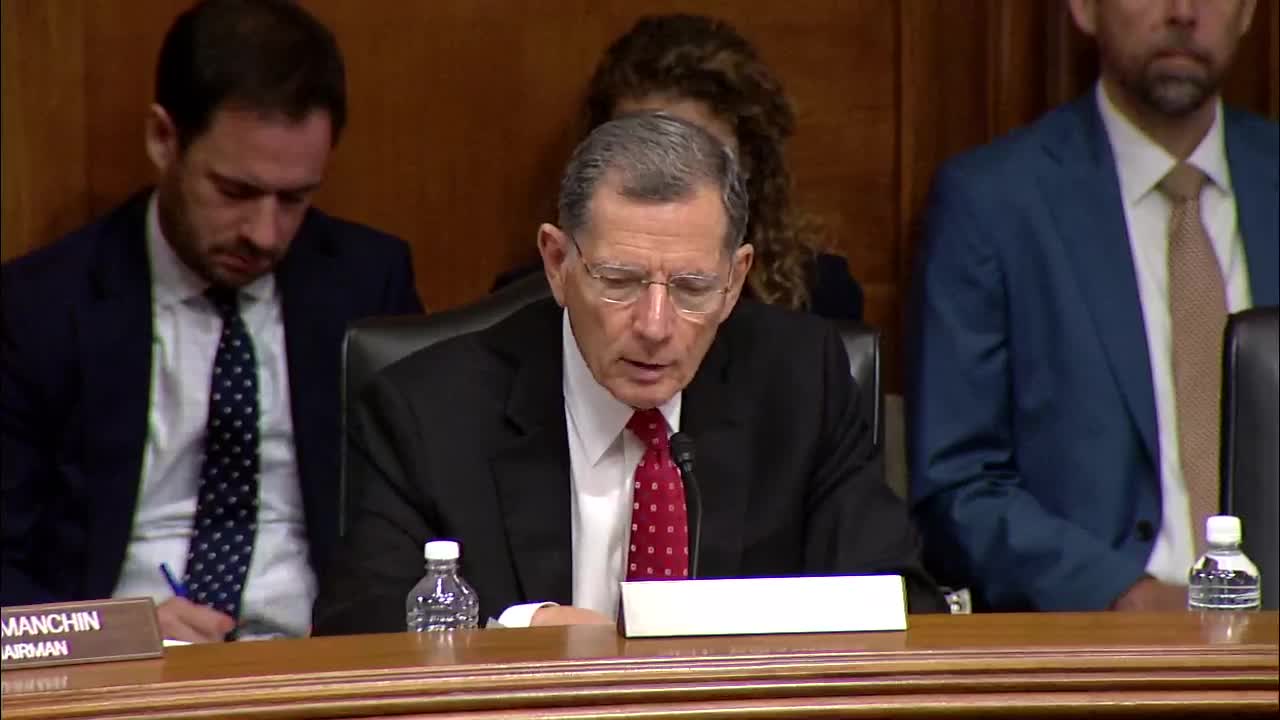Fusion energy safety concerns spark urgent regulatory discussions
September 19, 2024 | Energy and Natural Resources: Senate Committee, Standing Committees - House & Senate, Congressional Hearings Compilation
This article was created by AI summarizing key points discussed. AI makes mistakes, so for full details and context, please refer to the video of the full meeting. Please report any errors so we can fix them. Report an error »

In a recent government meeting, discussions centered around the safety and regulatory considerations of nuclear fusion technology, highlighting both its potential benefits and associated hazards. Senator Barrasso initiated the conversation by inquiring about the safety implications of fusion energy, prompting an expert to outline key safety concerns.
The expert emphasized that while nuclear fusion is often regarded as a safer alternative to traditional nuclear fission, it still poses certain risks. Notably, fusion reactions can produce neutrons, which may activate materials and render them radioactive. This necessitates stringent controls to manage and dispose of any radiation produced during fusion processes. The expert stressed the importance of protecting workers, the public, and the environment from potential byproducts of fusion reactions.
Another critical point raised was the handling of tritium, a radioactive isotope of hydrogen used in some fusion fuel cycles. Although the United States has experience in managing tritium safely, scaling up to industrial levels of fusion energy will require careful planning and regulation.
The meeting also highlighted the role of the Nuclear Regulatory Commission (NRC) in developing necessary regulations and guidance for the commercialization of fusion energy. The NRC, along with agreement states, is expected to take a leading role in licensing fusion technology as it progresses.
Senator Heinrich expressed enthusiasm for the fusion caucus, which aims to advance fusion research and development. He noted a shift in focus from purely physics-based efforts to engineering and material science, emphasizing the need to transition from laboratory success to practical energy production.
As the conversation unfolded, it became clear that while nuclear fusion holds promise as a clean energy source, ongoing attention to safety and regulatory frameworks will be crucial as the technology moves toward commercialization.
The expert emphasized that while nuclear fusion is often regarded as a safer alternative to traditional nuclear fission, it still poses certain risks. Notably, fusion reactions can produce neutrons, which may activate materials and render them radioactive. This necessitates stringent controls to manage and dispose of any radiation produced during fusion processes. The expert stressed the importance of protecting workers, the public, and the environment from potential byproducts of fusion reactions.
Another critical point raised was the handling of tritium, a radioactive isotope of hydrogen used in some fusion fuel cycles. Although the United States has experience in managing tritium safely, scaling up to industrial levels of fusion energy will require careful planning and regulation.
The meeting also highlighted the role of the Nuclear Regulatory Commission (NRC) in developing necessary regulations and guidance for the commercialization of fusion energy. The NRC, along with agreement states, is expected to take a leading role in licensing fusion technology as it progresses.
Senator Heinrich expressed enthusiasm for the fusion caucus, which aims to advance fusion research and development. He noted a shift in focus from purely physics-based efforts to engineering and material science, emphasizing the need to transition from laboratory success to practical energy production.
As the conversation unfolded, it became clear that while nuclear fusion holds promise as a clean energy source, ongoing attention to safety and regulatory frameworks will be crucial as the technology moves toward commercialization.
View full meeting
This article is based on a recent meeting—watch the full video and explore the complete transcript for deeper insights into the discussion.
View full meeting